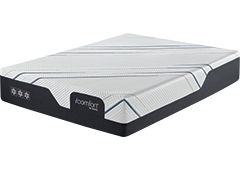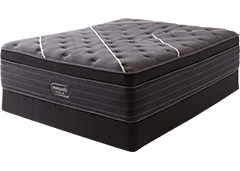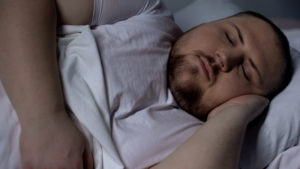
How to Pick the Best Mattress For A Heavier Person
Choosing the right mattress involves considering various factors, and among the most crucial is your body weight. Your weight not only influences the type of mattress you should opt for but also plays a pivotal role in determining how the mattress will feel for you. In essence, the heavier you are, the softer a mattress tends to feel compared to a lighter person on the same bed.
While there are specialized mattresses designed for heavier individuals, they often come with a hefty price tag, making them less accessible for many. The good news is that several budget-friendly options offer excellent support for those with above-average weight, typically 250 pounds and above.
In this blog post, we delve into the key considerations for individuals with above-average weight, guiding them on what to look for and what to avoid when choosing a mattress. By the end of the post, we’ll also provide recommendations for some top-performing mattresses that strike the right balance of support and affordability for heavier individuals. Read on to discover the perfect mattress that caters to your specific needs and ensures a comfortable and restful sleep.
Choosing a Mattress for a Heavier Person
Understanding Your Body’s Needs
Heavier individuals often find that their weight causes them to sink deeper into a mattress, which, if not appropriately addressed, can result in discomfort and a compromised sleep experience. The key lies in striking a delicate balance between support and comfort. The mattress must provide robust support to accommodate the additional weight without sacrificing the plushness and coziness that contribute to a truly comfortable sleep surface.
Understanding these intricate nuances becomes the foundational step in making a well-informed choice. It involves delving into the mechanics of how different mattress materials and designs respond to varying weights. By comprehending the interplay between body weight, sinkage, support, and comfort, individuals can embark on a journey to discover a mattress that not only meets their unique needs but elevates their sleep experience to new heights. This nuanced understanding empowers individuals to make choices aligned with their specific preferences, ensuring a restful and rejuvenating night’s sleep.
Mattress Types and Materials
Explore the various mattress types available, including memory foam, innerspring, latex, and hybrid options. Each type has its own set of benefits and drawbacks in relation to weight distribution and support. Consider how these materials align with your preferences and body requirements.
1. Memory Foam Mattresses:
- Benefits: Renowned for its exceptional ability to contour to the body’s shape, memory foam offers personalized support and pressure relief. This feature is particularly advantageous for heavier individuals, as it can help distribute weight evenly.
- Drawbacks: Memory foam mattresses may retain heat, and some people find them to be too soft. However, advancements in technology have led to the development of cooling memory foam and variations in firmness.
2. Innerspring Mattresses:
- Benefits: Innerspring mattresses are characterized by a system of coils that provide robust support. They offer excellent breathability, promoting a cooler sleep environment.
- Drawbacks: The coil system may not conform as closely to the body as memory foam, potentially leading to pressure points. Heavier individuals may experience quicker wear and tear on the coils.
3. Latex Mattresses:
- Benefits: Latex mattresses are celebrated for their durability and natural resilience. They offer a responsive and supportive surface that adapts to body contours without the sinking feeling often associated with memory foam.
- Drawbacks: Latex mattresses can be relatively expensive, and some individuals may find them too firm. However, variations in firmness levels are available to cater to different preferences.
4. Hybrid Mattresses:
- Benefits: Combining the best of both worlds, hybrid mattresses feature a blend of materials such as memory foam, latex, and innerspring coils. This design aims to provide optimal support, comfort, and temperature regulation.
- Drawbacks: Hybrid mattresses may be heavier and pricier due to their multi-layered construction. However, their versatility often outweighs these considerations.
Firmness Levels
The firmness of a mattress plays a pivotal role in determining the level of support and comfort it offers, and for individuals with above-average weight, choosing the right firmness becomes an even more nuanced decision. Here’s a detailed exploration of mattress firmness tailored to the specific needs of heavier individuals:
1. Soft Mattresses:
- Description: Soft mattresses have a plush and yielding feel, allowing for significant sinkage and contouring to the body’s curves.
- Considerations for Heavier Individuals: While soft mattresses can provide comfort, they are generally not recommended for heavier individuals as they may lead to excessive sinking, potentially causing misalignment and discomfort.
2. Medium-Soft Mattresses:
- Description: Medium-soft mattresses offer a balance between softness and support, providing a gentle cradle without compromising overall support.
- Considerations for Heavier Individuals: While medium-soft mattresses can be suitable for individuals with average weight, heavier individuals might find them lacking in the necessary support to prevent excessive sinkage.
3. Medium-Firm Mattresses:
- Description: Medium-firm mattresses strike a balance between softness and firmness, offering support while allowing for some contouring.
- Recommendation for Heavier Individuals: Considered the sweet spot for many heavier individuals, medium-firm mattresses provide the right blend of support and comfort, preventing excessive sinking and maintaining spinal alignment.
4. Firm Mattresses:
- Description: Firm mattresses have minimal sinkage and provide a solid, supportive surface. They are designed to maintain a more even alignment of the spine.
- Recommendation for Heavier Individuals: Heavier individuals often benefit from the enhanced support of a firm mattress, as it helps distribute weight more evenly and reduces the risk of sagging over time.
5. Extra Firm Mattresses:
- Description: Extra firm mattresses offer minimal give, providing a surface that is almost entirely resistant to compression.
- Considerations for Heavier Individuals: While some individuals may find extra firm mattresses suitable, they may be too rigid for others, potentially leading to discomfort, especially for those with higher body weight.
Choosing the Right Firmness:
- Individual Preferences: Consider your personal preferences for comfort and support.
- Body Weight Distribution: Heavier individuals should lean towards medium-firm to firm options to ensure adequate support and prevent excessive sinkage.
- Trial and Error: If possible, try out mattresses before purchasing or opt for those with generous trial periods to ensure the chosen firmness level aligns with your needs.
By familiarizing yourself with the firmness scale and understanding how it specifically relates to the needs of heavier individuals, you empower yourself to make a more informed decision. The goal is to strike a balance that not only aligns with your personal comfort preferences but also provides the necessary support to promote a healthy and restful sleep experience.
Temperature Regulation
The potential issue of heat retention in mattresses, particularly for individuals with above-average weight, is a nuanced consideration that can significantly impact sleep quality. To address this concern effectively, it’s beneficial to delve into more detailed information:
1. Understanding Heat Retention:
- Definition: Heat retention refers to a mattress’s ability to retain body heat, leading to an increase in temperature during sleep.
- Relevance for Heavier Individuals: Heavier individuals may experience heightened heat retention due to increased contact with the mattress surface.
2. Consequences of Heat Retention:
- Discomfort: Heat retention can cause discomfort during sleep, leading to restlessness and potential disruptions in the sleep cycle.
- Poor Temperature Regulation: Inadequate temperature regulation may result in a less-than-ideal sleep environment, impacting the overall sleep experience.
3. Mattresses with Cooling Technologies:
- Gel-Infused Memory Foam: Mattresses infused with cooling gel particles aim to dissipate heat and maintain a more neutral sleep temperature.
- Phase-Change Materials: Some mattresses incorporate phase-change materials that actively absorb and release heat to regulate temperature.
- Cooling Fabrics: Certain mattresses feature covers or layers made from breathable and cooling fabrics, enhancing airflow and heat dissipation.
4. Breathable Materials:
- Latex Mattresses: Natural latex mattresses are inherently breathable, allowing air circulation and heat dissipation.
- Innerspring Mattresses: The coil structure in innerspring mattresses promotes airflow, contributing to effective heat regulation.
- Hybrid Mattresses: Combining various materials, hybrid mattresses often incorporate breathable elements, such as latex or coils, to enhance ventilation.
5. Considerations for Heavier Individuals:
- Choose Cooling Technologies: Opt for mattresses explicitly designed with cooling technologies, as these can significantly mitigate heat retention issues.
- Evaluate Breathability: Assess the breathability of materials used in the mattress, with a focus on those that facilitate efficient airflow.
Edge Support
The significance of edge support in a mattress often escapes our attention, overshadowed by more apparent factors. However, when it comes to the practicality of getting in and out of bed, especially for those on the heavier side, the role of edge support becomes paramount.
Navigating Morning Mobility:
- Overlooked Factor: Edge support is often underestimated, but its impact on daily routines, such as getting out of bed in the morning, should not be dismissed.
- Practical Consideration: The ease of getting in and out of bed is directly influenced by the mattress’s ability to maintain stability and support along its edges.
Edge Support and Morning Mobility:
- Struggles Without Support: Little-to-no edge support can result in morning struggles for many individuals, particularly those with above-average weight.
- Material Variations: While mattresses of all materials may offer some level of edge support, it’s notably prominent in both hybrid and innerspring mattresses.
- Sinkage Concerns: Hybrid and innerspring mattresses are designed to minimize sinkage, providing a solid and supportive edge that facilitates smooth transitions in and out of bed.
While each of these will have designs that are built to handle certain weights, it’s mostly recommended that you go with either a Box Spring or a Platform Foundation. This is driven by the fact that they can often be much more durable while being able to handle a larger amount of weight.
Durability
Considering the longevity of your mattress is a crucial aspect of the purchasing decision, irrespective of your body weight. No one desires frequent mattress replacements, making it essential to gauge the durability of a chosen model. Here are comprehensive insights to guide you:
1. Determining Longevity:
- Buyer Consideration: Prospective buyers should assess the expected lifespan of a mattress to make an informed decision that aligns with their long-term comfort needs.
- Consultation with Sales Representative: Engaging with a knowledgeable sales representative in-store can provide valuable insights into the durability of a mattress. They can guide you on the expected lifespan based on the mattress type and materials used.
2. General Longevity Expectation:
- High-Quality Standards: In general, high-quality mattresses are expected to last at least ten years, providing a reliable and comfortable sleep surface for an extended period.
- Variances in Durability: The actual lifespan can vary based on the mattress type and construction materials, warranting attention to these details during the selection process.
3. Warranty Considerations:
- Protection Against Damage: Evaluating the warranty that accompanies the mattress is crucial. A warranty serves as protection against potential damage and defects that may arise over the years.
- Typical Warranty Duration: Most good-quality mattresses come with warranties ranging from 10 to 15 years, reflecting the manufacturer’s confidence in the product’s durability.
- Extended Warranty Options: Some manufacturers offer the option to purchase extended warranties, providing additional coverage beyond the standard warranty period.
4. Material Impact on Longevity:
- Innerspring Mattresses: The coil structure in innerspring mattresses may impact their durability. Higher coil counts and robust materials contribute to a longer lifespan.
- Memory Foam Mattresses: High-density memory foam tends to be more durable, offering consistent support over an extended period.
- Latex Mattresses: Natural latex mattresses are renowned for their durability, often outlasting other mattress types.
5. Maintenance Practices:
- Rotate and Flip: Regularly rotating and flipping the mattress, if applicable, can contribute to more even wear and an extended lifespan.
- Use of Mattress Protectors: Employing mattress protectors can shield the mattress from spills, stains, and allergens, enhancing its longevity.

Conclusion
There are many mattress options that are great for heavier people and these options will differ depending on where you are situated. Sleep Masters Canada is a mattress store in Toronto and if you are local to us, we highly recommend that you visit us and test out the different options for yourself! If you prefer to shop online, you may also take a look at our most popular firm mattresses:
Beautyrest Quintessence Immaculate Luxury Firm Pillowtop
Choosing the best mattress for a heavier person involves a thoughtful consideration of various factors. By understanding your body’s needs, exploring different mattress types, and keeping key considerations in mind, you can make an informed decision that leads to restful and rejuvenating sleep. If you are still unsure about which mattress works best for you, do not worry! You may take advantage of our Mattress Selector Tool, and we will reach out to you asap with our best recommendation. You can trust the best mattress store in Toronto to solve your sleep related concerns.

 Serta
Serta Simmons BeautyRest®
Simmons BeautyRest® Pocket Coil
Pocket Coil Memory Foam
Memory Foam Pillow-Top
Pillow-Top Dreamstar Mattresses
Dreamstar Mattresses Mattresses under $500
Mattresses under $500